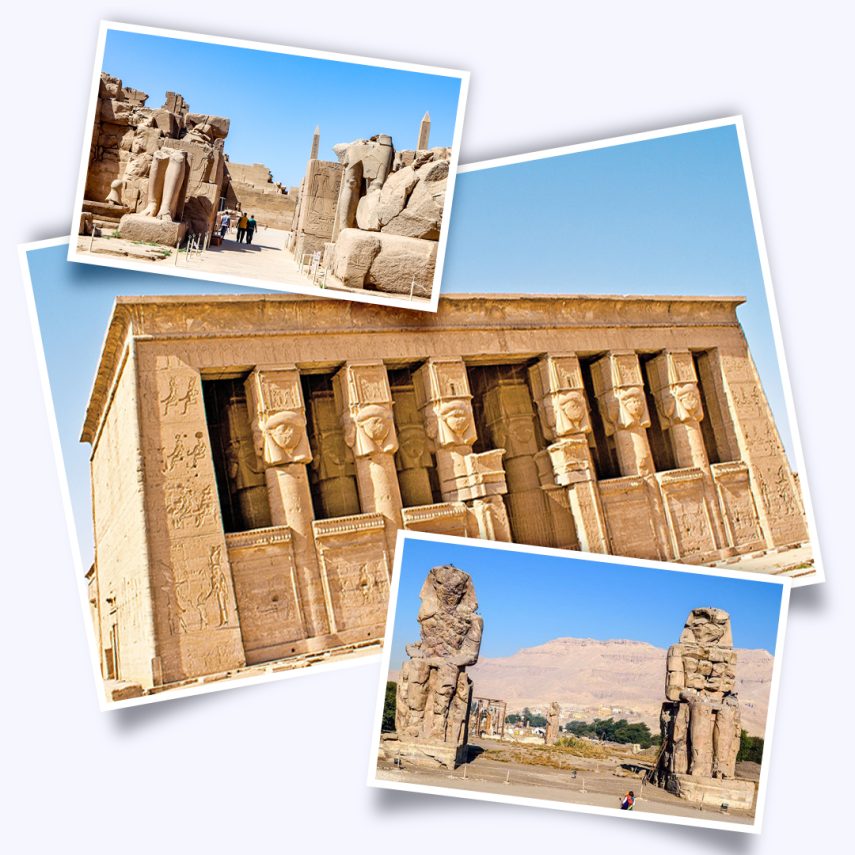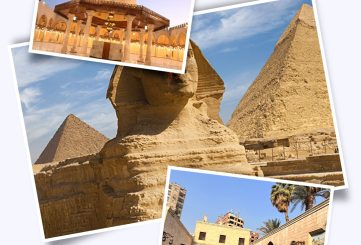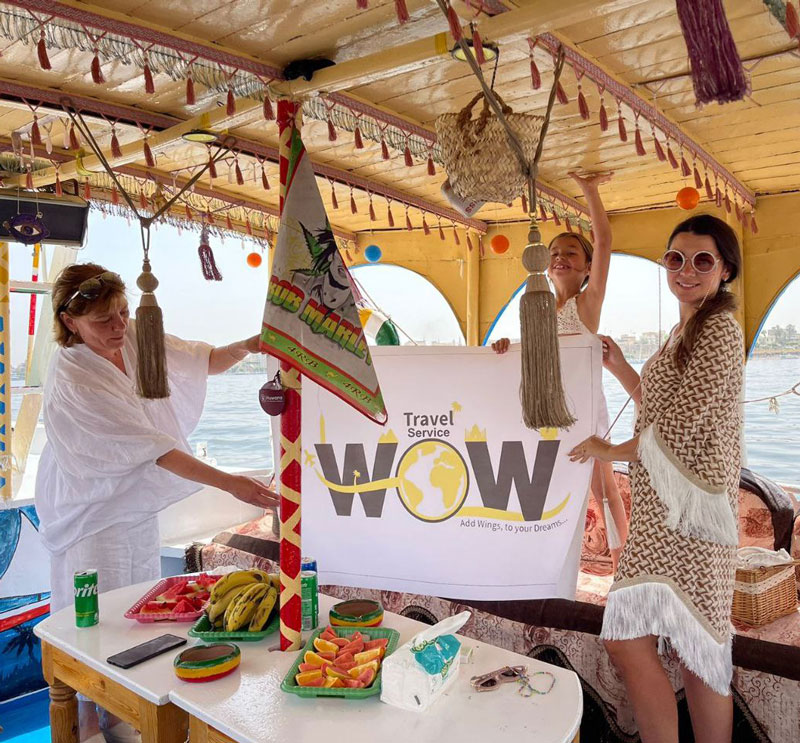Super Luxor and Dendera (without shopping)
- $45 for ages 13 and above
- $23 for children aged 6-12
- Free for children under 6
- Transfer from the hotel around 4:00 am, depending on the hotel location.
- Hathor Temple (Dendera).
- City of the Living: Visit Karnak Temple Complex (statue of the scarab beetle, sacred lake).
- Boat trip to the other side of the Nile.
- Lunch at a restaurant with a view of the river (buffet).
- City of the Dead: Colossi of Memnon, visit the Temple of Hatshepsut.
- Optional boat trip to Banana Island (booked with the guide).
- Transfer to Hurghada, arrival at the hotel around 10:00 pm, depending on the hotel location.
*The order may vary depending on the flow of tourists.
- Water, hotel dry rations, or snacks.
- Headgear.
- Sunglasses.
- Sunscreen.
- Comfortable footwear.
- Warm clothing during winter months.
- Money for personal expenses.
Included:
- Transportation service.
- Transfer in a tourist modern air-conditioned bus with a toilet.
- Guide - egyptologist.
- Entrance tickets to all mentioned attractions.
- Lunch at a restaurant.
Not included:
- Additional expenses not included in the program.
- Drinks at the restaurant.
- Boat trip to Banana Island - $10.
- Transportation service within Hurghada round trip for up to 6 people:
Hotels in El-Gouna, Sahel-Hashish - $10
Hotels in Soma Bay (Kempinski and Sheraton) - $15
Luxor is rightfully considered the largest open-air museum, and its name comes from the Arabic word “El-Uksur,” which means “palaces.” The city is divided by the Nile River into two parts: the right (eastern) bank, known as the “City of the Living,” and the left (western) bank, known as the “City of the Dead.”
We offer various excursion programs that include the most interesting sights, but it’s impossible to cover everything within the standard group tours. For those who want to see more, we organize individual excursions in Luxor.
The Dendera Temple Complex covers an area of about 40,000 square meters. Construction is believed to have begun between 2613 and 2494 BC. The site contains structures from different periods, with the most notable being the Sacred Lake, the Temple of the goddess Isis, and, of course, the Temple of the goddess of love and beauty, Hathor. Women have visited this temple for centuries to seek assistance with conception and childbirth.
The Karnak Temple Complex covers an area of 1.5 km by 700 m. Construction of the complex began in the 20th century BC and lasted for 13 centuries. Karnak is the only temple consisting of 10 halls and 10 gates (pylons). The tour usually highlights the statue of the scarab beetle, which, according to legend, grants wishes, and the sacred lake measuring 129 x 77 meters, once used for ritual bathing. From the Karnak Temple Complex, a sacred pathway in the form of an avenue of sphinxes leads to the Luxor Temple.
The Colossi of Memnon are the only surviving remnants of the Temple of Amenhotep III, built around 1400 BC. The temple was completely destroyed by an earthquake around 1200 BC, but the colossi remained. Another strong earthquake in the 27th century BC partially damaged the left statue, and the colossus began to “sing” at dawn. However, after the restoration of the colossus in 199 AD, the singing ceased.
The Temple of Hatshepsut was built between 1482 and 1473 BC. The ancient name of the temple, “Djeser-Djeseru,” means “Holiest of the Holies.” The temple of the female pharaoh was a place of pilgrimage, where people left requests for help or healing from diseases on the walls.
When visiting Banana Island, you can see not only how bananas grow but also other fruits such as mangoes and mandarins, as well as sugarcane, mint, and various spices. There is a cafe on the island where freshly picked bananas will be offered to you for free. You can also pick them directly from the “banana tree” (bush) while walking on the island.









